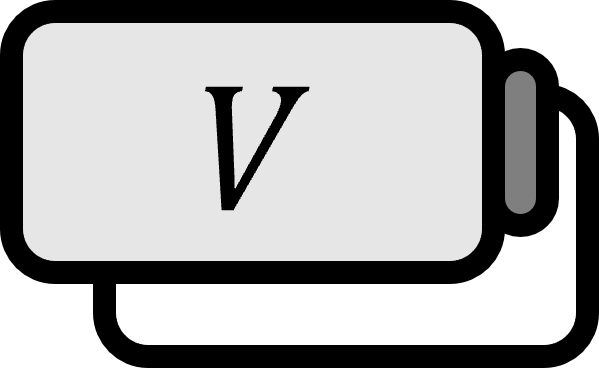Kernel and Range of Linear Transformation
Definition1
Let’s say $T : V \to W$ is a linear transformation. The set of elements of $V$ that are mapped to $\mathbf{0}$ by $T$ is called the kernel or null space, and is denoted as follows.
$$ \text{ker}(T) = N(T) := \left\{ \mathbf{v} \in V : T( \mathbf{v} ) = \mathbf{0} \right\} $$
The set of images under $\mathbf{v} \in V$ by $T$ is called the range or image of $T$, and is denoted as follows.
$$ \im (T) = R(T) := \left\{ T(\mathbf{v}) : \forall \mathbf{v} \in V \right\} $$
Explanation
If $T : V \to W$ is a linear transformation and $V, W$ is finite-dimensional, $T$ is essentially the same as a matrix, and $N(T)$ is the null space of the matrix representing $T$.
Theorem
Let’s consider $T : V \to W$ to be a linear transformation. Then,
(a) The kernel of $T$ is a subspace of $V$.
(b) The range of $T$ is a subspace of $W$.
(c) $T$ is injective $\iff$ $\ker T$ $= \left\{ \mathbf{0} \right\}$
Proof
To show that it’s a subspace, we need to prove that it’s nonempty, and closed under addition and scalar multiplication.
(a)
If $T$ is a linear transformation, then according to $T(\mathbf{0})=\mathbf{0}$, $N(T)$ is not empty. Now, let $\mathbf{v}_{1}, \mathbf{v}_{2} \in N(T)$ and consider $k$ to be any scalar. Then, the following holds.
$$ \begin{align*} T( \mathbf{v}_{1} + \mathbf{v}_{2} ) &= T(\mathbf{v}_{1}) + T(\mathbf{v}_{2}) = \mathbf{0} + \mathbf{0} = \mathbf{0} \\ T( k\mathbf{v}_{1}) &= kT(\mathbf{v}_{1}) = k\mathbf{0} = \mathbf{0} \end{align*} $$
Hence, $N(T)$ is a subspace of $V$.
■
(b)
If $T$ is a linear transformation, then, as per $T(\mathbf{0})=\mathbf{0}$, $R(T)$ is not empty. Now, let $\mathbf{w}_{1}, \mathbf{w}_{2} \in R(T)$ and consider $k$ to be any scalar. Then, it suffices to show that there exists $\mathbf{a}, \mathbf{b} \in V$ that satisfies the following.
$$ T(\mathbf{a}) = \mathbf{w}_{1} + \mathbf{w}_{2} \quad \text{and} \quad T(\mathbf{b}) = k\mathbf{w}_{1} $$
But the statement $\mathbf{w}_{1}, \mathbf{w}_{2} \in R(T)$ means that there exists $\mathbf{v}_{1}, \mathbf{v}_{2} \in V$ that satisfies the following.
$$ T(\mathbf{v}_{1}) = \mathbf{w}_{1} \quad \text{and} \quad T(\mathbf{v}_{2}) = \mathbf{w}_{2} $$
Therefore, the following equation holds.
$$ \begin{align*} \mathbf{w}_{1} + \mathbf{w}_{2} &= T(\mathbf{v}_{1}) + T(\mathbf{v}_{2}) = T(\mathbf{v}_{1} + \mathbf{v}_{2}) = T(\mathbf{a}) \\ k\mathbf{w}_{1} &= kT(\mathbf{v}_{1}) = T(k\mathbf{v}_{1})= T(\mathbf{b}) \end{align*} $$
Hence, $R(T)$ is a subspace of $W$.
■
(c)
$(\implies)$
Assume the linear transformation $T$ is one-to-one. Then
$$ T(\mathbf{v}) = T(\mathbf{0}) \implies \mathbf{v} = \mathbf{0} $$
Since for any linear transformation $T(\mathbf{0})=\mathbf{0}$, it follows that
$$ \ker T = \left\{ \mathbf{0} \right\} $$
■
$(\impliedby)$
Assume $\ker T = \left\{ \mathbf{0} \right\}$. Because $T$ is linear, we have
$$ T(\mathbf{v}_{1}) = T(\mathbf{v}_{2}) \implies T(\mathbf{v}_{1} - \mathbf{v}_{2}) = \mathbf{0} $$
By the assumption, $\mathbf{v}_{1}=\mathbf{v}_{2}$, so $T$ is one-to-one.
■
Howard Anton, Elementary Linear Algebra: Aplications Version (12th Edition, 2019), p455-456 ↩︎
